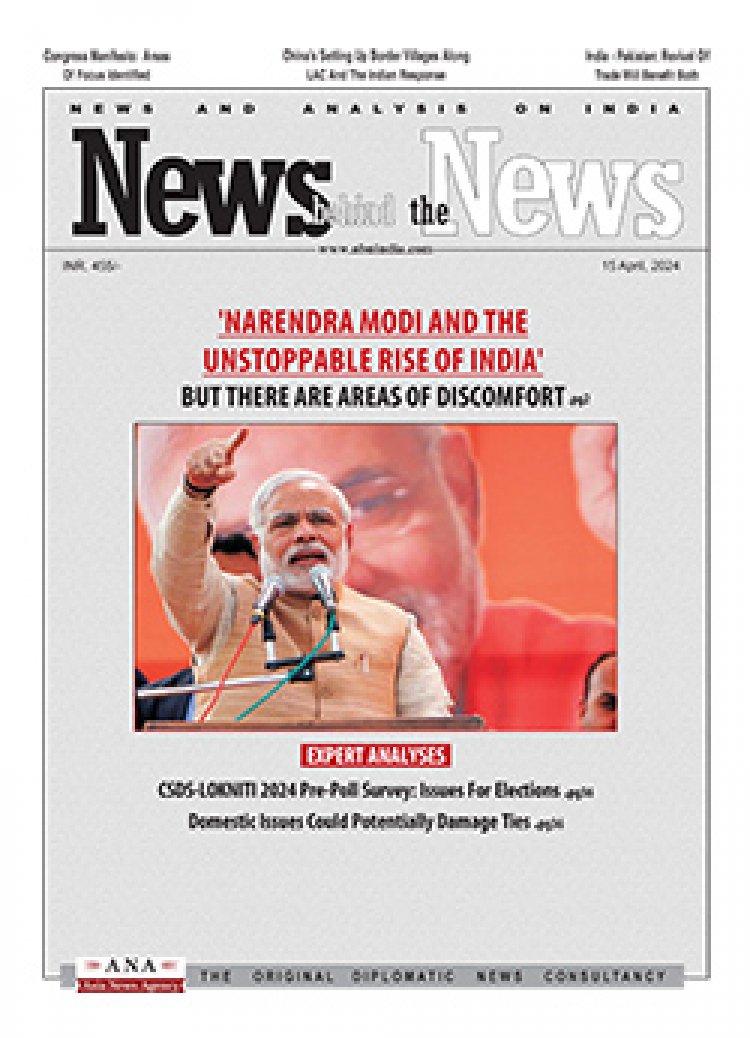Inflation and Growth: The Latter a Bigger Worry for 2023
STORIES, ANALYSES, EXPERT VIEWS

At a panel discussion during the World Economic Forum Annual Meeting 2023, experts said those on low income and in the developing world will be grappling with high prices for years to come. This implies that there is no end in sight for the cost of living crisis.
Inflation and cost of living: Gita Gopinatha, Deputy Managing Director of the IMF, said, "we do believe that, in terms of headline inflation for the global economy, we think it peaked in 2022."
Participants agreed that inflation is inextricably linked to the cost of living crisis and tackling inflation is key to easing the cost crunch in the long run.
Core inflation worries in India
In India, official data last week showed retail inflation continues to moderate. It grew by 5.7% in December. Throughout the year 2022, elevated inflation levels writes Udit Misra ( writes for The Indian Express, Business Standard) “robbed people of their purchasing power and worsened India’s trade deficit, which resulted in India’s currency becoming weaker and the RBI losing significant forex reserves as it tried to stem the rupee’s slide.”
Although the worst of the inflationary spiral may be over for now, the US Federal Reserve, and even the RBI are likely to continue raising rates. This is because in India, the level of core inflation, will remain a matter of concern.
Core inflation that ignores the prices of food and fuel, has stayed at the 6% mark since September, and in December inched up to 6.1%. This, according to Misra suggests that “higher prices have seeped through in the broader economy. This means Indian consumers will have to pay higher prices even if food and fuel prices come down…..this will curtail consumption and dampen the demand among businesses to invest in new capacities.
Other factors that are likely to drag down economy
Misra identifies three big factors that are likely to impact growth.
“One, the economy is already losing momentum…..Data suggest while India’s GDP in the first six months of 2023-24 (April to September) grew by almost 10%, in the second half it is expected to grow by less than half that rate; just 4.5% to be precise.
“Two, RBI’s tighter monetary policy will take effect and drag down growth by making credit costlier…..
“Three, the domestic slowdown will likely to be exacerbated by the likely global slowdown….”
As a result, CRISIL expects the Indian economy to grow at just 6% in 2023-24. Nomura Research expects the GDP to grow by just about 5% in 2023.
Inflation a bigger threat: Standard Chartered group chief executive
Standard Chartered group chief executive Bill Winters, in his view says inflation can remain a problem for central banks a lot longer than what the markets are factoring in and even if a recession happens, rates won't go back to zero. “Which means higher interest rates for longer. And that could prompt a recession which would be challenging. Then the obvious geopolitical risks…..”
On India, Winters says “the alignment between the perspective of local business people, small businesses, medium-sized businesses, large businesses, financial institutions, external investors, domestic investors, government and economists has never been this consistent….”
Challenges to India’s growth prospects
Inflation apart, the relevant issue for the India economy is its probable growth in 2023-24. As the number of COVID-19 cases subsided, 2022-23 was expected to be a normal year. However, Russia’s invasion of Ukraine disrupted supply of critical imports and, as a consequence, the prices of such imports increased sharply, derailing many economies. Growth slowed down, and India was affected too. While India’s performance was relatively better than many other countries, C Rangarajan (economist, a former MP and Governor of RBI) and D K Srivastava (Honorary Professor at Madras School of Economics and Member of the Advisory Council to the 15th Finance Commission) write “the return to normalcy has been delayed. Even at the currently projected growth rate, India’s GDP at the end of the present fiscal year will only be 8.57% higher than its level in 2019-20, giving an average of 2.86% for three years. India needs to move on to a high growth path beginning 2023-24….”
There is a need, emphasise the two experts “to recognise the challenges to India’s growth prospects in view of the global economic slowdown. Multilateral institutions have projected global growth prospects and India’s growth prospects for 2023-24. The Organization for Economic Co-operation and Development has projected a growth rate of 2.2% for the global economy in 2023 and 5.7% for India in 2023-24. The International Monetary Fund, on the other hand, has projected global growth at 2.7% and India’s growth at 6.1%. India may be able to achieve a growth in the range of 6-6.5% in 2023-24, provided significant policy support is given to growth.”
The need is for correction in the government’s fiscal deficit. This “primarily arises because of the relative profile of savings and investment as a proportion of GDP…”
















